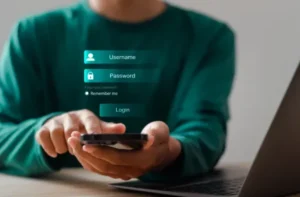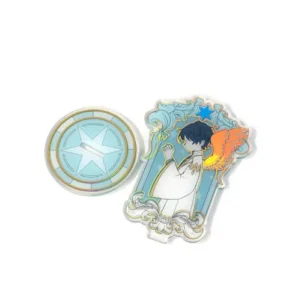When crafting professional emails, finding the right words to express your message can make a significant difference in how your communication is received. Choosing the appropriate alternative to phrases like “I am writing to let you know” can make your message feel more personal, thoughtful, and impactful. The following alternatives provide warmth, care, and professionalism, helping you to convey your message with the right tone.
What Does “I Am Writing to Let You Know” Mean?
“I am writing to let you know” is a formal phrase often used at the beginning of emails to convey information or update the recipient on a particular matter. It’s a polite way to start a message that provides important details.
When to Use “I Am Writing to Let You Know”
This phrase is appropriate for emails where you need to inform someone about a change, an update, or a piece of important information. It is commonly used in professional settings, especially in customer service, business communication, or formal notifications.
Is It Professional/Polite to Say “I Am Writing to Let You Know”?
Yes, “I am writing to let you know” is considered professional and polite. However, it can sound a bit formulaic or impersonal if overused. Using more varied and nuanced phrases can make your communication feel more engaging and personalized.
Full List of Alternatives:
- I’m Writing to Notify You
- I Would Like to Bring to Your Attention
- I Thought It Important to Inform You
- I Wanted to Let You Know
- Please Take Note That
- I Am Reaching Out to Update You
- I Would Like to Make You Aware of
- This is to Notify You That
- I Wanted to Update You On
- I’m Writing to Share with You
- I Would Like to Notify You
- I’m Writing to Alert You
- I Wanted to Inform You
- I’m Writing to Let You Know About
- I Would Like to Update You On
- I’m Writing to Bring Your Attention to
- I Would Like to Notify You Regarding
- I’m Reaching Out to Inform You That
- I Thought You Should Know
- Just Wanted to Inform You
- I’m Writing to Let You Know That
- I’m Writing to Provide You with an Update
- I Wanted to Make You Aware of
- I’m Contacting You to Update You on
- I Wanted to Pass Along This Information
- I’m Writing to Update You Regarding
- I Would Like to Share with You
- I’m Writing to Ensure You Are Informed About
- I Wanted to Bring This to Your Attention
- I’m Writing to Keep You Informed About
1. I Would Like to Inform You
- Meaning: A formal way to introduce the purpose of your message.
- Definition: This phrase communicates that the information being shared is important and you wish to make the recipient aware of it.
- Example: “I would like to inform you about the upcoming changes to the schedule.”
- Tone: Polite, formal.
2. Please Be Informed That
- Meaning: A courteous way of delivering information.
- Definition: Often used in formal communication, it helps to notify the recipient of key details without being overly casual.
- Example: “Please be informed that your request has been approved.”
- Tone: Professional, informative.
3. I Wanted to Notify You
- Meaning: A more conversational way to express that you’re delivering information.
- Definition: This phrase conveys that the sender is proactively sharing important news.
- Example: “I wanted to notify you of the recent developments in the project.”
- Tone: Casual, yet professional.
4. I Am Reaching Out to Let You Know
- Meaning: A friendly yet professional way of starting an email.
- Definition: This phrase conveys that you’re contacting the person to provide an update.
- Example: “I am reaching out to let you know that your package is on its way.”
- Tone: Friendly, professional.
5. Just a Quick Note to Inform You
- Meaning: A more relaxed and brief way to convey the same message.
- Definition: A lighter, more approachable way to share necessary information without sounding too formal.
- Example: “Just a quick note to inform you that the meeting has been rescheduled.”
- Tone: Light, approachable.
6. I Wanted to Bring to Your Attention
- Meaning: A polite way to highlight something important.
- Definition: This expression draws focus to specific information or an issue that the reader needs to be aware of.
- Example: “I wanted to bring to your attention a change in our upcoming deadlines.”
- Tone: Respectful, polite.
7. I Am Writing to Update You
- Meaning: A more direct and focused way of communicating an update.
- Definition: This phrase clearly communicates that the purpose of the message is to provide a specific update.
- Example: “I am writing to update you on the status of your request.”
- Tone: Professional, concise.
8. This is to Inform You
- Meaning: A formal and neutral way to provide information.
- Definition: This phrase is used when the sender wants to communicate an update without sounding overly personal.
- Example: “This is to inform you that the office will be closed for the holidays.”
- Tone: Neutral, formal.
9. I Would Like to Make You Aware
- Meaning: A polite and respectful way to inform someone of something.
- Definition: This expression helps to make the recipient aware of important facts or changes.
- Example: “I would like to make you aware of the recent adjustments to our policy.”
- Tone: Polite, considerate.
10. I’m Writing to Keep You Informed
- Meaning: A proactive way to ensure the recipient stays updated.
- Definition: This phrase suggests a commitment to keeping the recipient in the loop.
- Example: “I’m writing to keep you informed about the progress of the project.”
- Tone: Engaging, considerate.
11. I Am Contacting You to Let You Know
- Meaning: A slightly more formal and straightforward way of sharing news.
- Definition: It directly communicates that the purpose of the email is to pass along important information.
- Example: “I am contacting you to let you know about the new pricing structure.”
- Tone: Formal, direct.
12. Just a Heads Up
- Meaning: An informal, yet professional way to give someone a brief warning or piece of information.
- Definition: Often used in less formal communications, this phrase helps the recipient prepare for something.
- Example: “Just a heads up, our system will be down for maintenance tomorrow.”
- Tone: Informal, casual.
13. Allow Me to Update You
- Meaning: A respectful and polite way to introduce an update.
- Definition: This phrase communicates that you are providing an important update in a courteous manner.
- Example: “Allow me to update you on the status of your inquiry.”
- Tone: Formal, respectful.
14. I Thought You Should Know
- Meaning: A more conversational and slightly informal way of giving someone important information.
- Definition: This expression implies that the information you’re sharing is of importance and worth noting.
- Example: “I thought you should know that your application has been successfully submitted.”
- Tone: Casual, friendly.
15. I Am Following Up to Let You Know
- Meaning: A follow-up phrase that provides an update after a previous interaction.
- Definition: This phrase helps to emphasize that the message is a continuation of an earlier conversation.
- Example: “I am following up to let you know that the requested documents are ready.”
- Tone: Courteous, professional.
16. I’m Writing to Notify You
- Meaning: A more formal way to announce that you have information to share.
- Definition: This phrase is used to formally inform someone about something important or relevant.
- Example: “I’m writing to notify you that your request has been successfully processed.”
- Tone: Formal, clear.
17. I Would Like to Bring to Your Attention
- Meaning: A polite way to highlight something important.
- Definition: This expression is used to draw someone’s focus to a piece of information they need to know.
- Example: “I would like to bring to your attention the upcoming deadline for the project.”
- Tone: Respectful, considerate.
18. I Thought It Important to Inform You
- Meaning: A more thoughtful way of introducing important information.
- Definition: This phrase emphasizes the importance of the message being conveyed.
- Example: “I thought it important to inform you that there has been a change in the meeting time.”
- Tone: Thoughtful, polite.
19. I Wanted to Let You Know
- Meaning: A more personal and conversational way to communicate news.
- Definition: This phrase makes the message feel more approachable while still professional.
- Example: “I wanted to let you know that your order has been shipped.”
- Tone: Friendly, informal.
20. Please Take Note That
- Meaning: A formal way to request the recipient’s attention to important information.
- Definition: This expression is often used to notify the reader of critical details that require attention.
- Example: “Please take note that the office will be closed on Monday for a public holiday.”
- Tone: Polite, formal.
21. I Am Reaching Out to Update You
- Meaning: A proactive way to share an update with the recipient.
- Definition: This phrase conveys that you’re taking the initiative to provide the recipient with the latest information.
- Example: “I am reaching out to update you about the recent developments in the project.”
- Tone: Professional, approachable.
22. I Would Like to Make You Aware of
- Meaning: A formal way to ensure the recipient knows about something.
- Definition: This expression ensures that the recipient is fully informed of important matters.
- Example: “I would like to make you aware of the new regulations that will come into effect next month.”
- Tone: Professional, polite.
23. This is to Notify You That
- Meaning: A neutral and formal way to notify someone.
- Definition: Used to formally inform the recipient of a change or development.
- Example: “This is to notify you that your application has been accepted.”
- Tone: Formal, direct.
24. I Wanted to Update You On
- Meaning: A slightly informal, yet professional way to share news or an update.
- Definition: This phrase suggests that you are following up with someone to keep them informed of any changes or developments.
- Example: “I wanted to update you on the status of your claim.”
- Tone: Informal, professional.
25. I’m Writing to Share with You
- Meaning: A warm and slightly informal approach to sharing information.
- Definition: This phrase is often used when you wish to share information in a less formal manner.
- Example: “I’m writing to share with you the exciting news about our new product launch.”
- Tone: Warm, approachable.
26. I Would Like to Notify You
- Meaning: A formal and straightforward expression to convey important information.
- Definition: This phrase is often used in official or business contexts to notify someone of something.
- Example: “I would like to notify you that your account has been successfully upgraded.”
- Tone: Professional, formal.
27. I’m Writing to Alert You
- Meaning: A more urgent or time-sensitive way to communicate important news.
- Definition: Used to convey urgency or important information that requires attention.
- Example: “I’m writing to alert you about the upcoming change to the payment deadline.”
- Tone: Urgent, formal.
28. I Wanted to Inform You
- Meaning: A polite, neutral way to share necessary details with someone.
- Definition: This expression is often used when you want to let someone know about an update or change.
- Example: “I wanted to inform you about the cancellation of tomorrow’s meeting.”
- Tone: Polite, professional.
29. I’m Writing to Let You Know About
- Meaning: A polite and clear way of introducing an update or piece of news.
- Definition: This phrase provides clarity while also being respectful of the recipient’s time.
- Example: “I’m writing to let you know about the new changes to our company policies.”
- Tone: Professional, direct.
30. I Would Like to Update You On
- Meaning: A courteous way to update someone with the latest information.
- Definition: This phrase is useful for keeping someone in the loop or providing ongoing updates.
- Example: “I would like to update you on the progress we’ve made with the project.”
- Tone: Formal, polite.
Conclusion
By varying your approach and tone when communicating updates or important information, you can enhance the professionalism and clarity of your message. The alternatives to “I am writing to let you know” allow you to be thoughtful, engaging, and clear while maintaining a sense of professionalism in your communication.
Whether you need to be formal, polite, or warm, these options provide a wide range of choices to suit the context of your message.
Recent Posts
30 Other Ways to Say “Have a Great Rest of Your Week” in an Email Professionally (With Examples)
30 Other Ways to Say “I Look Forward to Connecting With You” Professionally (With Examples)
30 Other Ways to Say “I Apologize for the Confusion” Professionally (With Examples)
30 Other Ways to Say “I Was Wondering” Professionally (With Examples)

Noah White is a seasoned writer and the visionary behind LexiQuester, a hub for exploring the magic of language and storytelling. With a flair for weaving words into captivating narratives, he seeks to ignite curiosity in readers. When not writing, Noah enjoys delving into literature and uncovering linguistic treasures.














